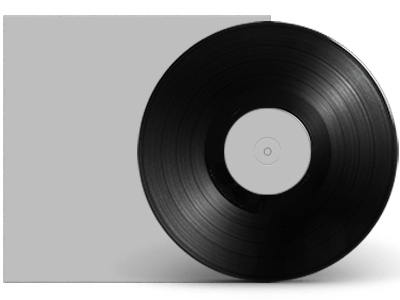
NORMAN MCLAREN – Rythmetic: The Compositions of Norman MClaren
This product is currently sold out.
Don't worry! Enter your email and we'll notify you when it's available again.
Description
Pioneering Scottish-Canadian animator Norman McLaren (1914-1987) – creator of seminal short films Dots, Neighbours, Synchromy and many more – is remembered in first ever release of soundtrack works, self-composed from the 1940’s to 1970’s and forecasting the following half-century of electronic music.
Norman McLaren was once described by composer, music theorist, and mathematician Milton Babbitt as “the first electronic musician.” In addition to his pioneering work in animation, the electronic soundtracks McLaren created for his own films employ astonishing foresight and a characteristically precise methodology. They also crystallise boundless creativity, wit and whimsy, and illuminative brilliance into a unique insight to his remarkable mind, with or without visual accompaniment.
Rythmetic: The Compositions of Norman McLaren marks the first time his soundtracks have been released on record, carefully curated from his most important film works, hours of archival tapes, and multiple versions of the same key compositions. It represents an essential overview of McLaren as a composer, in neat dovetail with McLaren the filmmaker. Both are crucial figures in the respective developments of their fields, opening doors to a future that might not have existed without McLaren.
As an animator, McLaren was renowned for utilising or inventing techniques at their very vanguard and shaping to his needs the rudimentary technology of the era. Many of these techniques and technological adaptations, developed at the National Film Board of Canada over the 1940’s and 50’s, would eventually become adopted into standard practice for animation. He also blazed new trails for soundtrack composition: having heard the glue of spliced film reel produce sound as it passed through his equipment, he began meticulously applying his own cuts and notches to the tape and measuring the frequency values of the tones these striations would emit. Over years of refinement, he created a series of cards to correspond to eight octaves of musical notes, frequency by frequency, and to recruit these cards to compose his soundtracks. It was a way to maintain total creative control and freedom over his own work – every single frame would be processed “the McLaren way”.
“He could have used a synthesiser,” writes long-term assistant, friend, and filmmaker of McLaren documentaries Don McWilliams, also at the National Film Board, “but he had his own method and he stuck with it.” John Cage was an ardent fan, inviting McLaren to his infamous downtown NYC socials and once even writing to McLaren to beg a recommendation for his recruitment at the National Film Board.
Unsurprisingly, McLaren was musically capable and aware throughout his career. He was an inquisitive listener, often drawn to rhythmic expression found outside western music, and he collected records for both reference and enjoyment. West African and Chinese music were particular pleasures, as well as the gypsy jigs that in his youth had informed his own practice as a violin player.
The opening piece to this compilation, “Now Is The Time”, is crafted from trilling, birdsong arpeggiations of dulcet high frequency tones that chatter and warble in scattered dialogue. Accompanying the clouds, multiple suns, and dancing figures of the film, the soundtrack is alive with joy and wonderment. Next, “Rythmetic”, soundtracking McLaren’s famed numeric sequence visualisation, pitters and patters with the types of glitching rhythms so coveted by contemporary electronic music almost a century later. Even from these first pieces alone, it is readily apparent that McLaren could not have achieved the effect he desired with scored instrumentation. The “McLaren way”, so crucial to his process, is as much foundational to his soundtracks as it is to the films themselves.
Despite his acclaim and recognition within the world of film and animation – he won an Oscar, a Palme d’Or, is a favourite of George Lucas’, and is recorded in UNESCO’s cultural heritage archives (none of which interested him) – Norman McLaren is not a Walt Disney, Tex Avery, Chuck Jones, or an Ub Iwerks. His work is unflinchingly outré. Seeking out experimental, innovative, and unconventional modes of storytelling, his creative expression went even deeper than pioneering methodology and a prolific output, becoming part of the man himself as his working hours in the studio became longer and longer as his career blossomed. Even his straightest films are decidedly odd at their core, revealing not only a playful and joyously childlike sense of humour, but also the perpetual pursuit of perfection that fuelled his filmmaking throughout his life.
A gay man, McLaren also resisted the normative social structures of the day in his personal life, acutely aware of the legal implications of his relationship with lifelong partner and fellow NFB director Guy Glover. He also remains revered as the most generous and trusting of teachers, bringing under his wing young or inexperienced filmmakers in whom he saw passion and promise. His second protegee George Dunning, who went on to produce Yellow Submarine for the Beatles, had only recently graduated when McLaren brought him to work in the NFB studios.
Towards the end of McLaren’s career, McWilliams asked him how he perceived his own legacy; how Norman McLaren would be remembered in a hundred years’ time. “A filmmaker who made some interesting films,” was his reply. Modest, funny, wise, and yet knowingly sly. An answer most McLaren.
Tracks
01. Now Is The Time
02. Rythmetic
03. Neighbours
04. Synchromy
05. Unreleased Composition (1945-1946)
06. Dots
07. Loops
08. Mosaic
09. Unreleased Composition (c. 1945)
10. Unreleased Composition (1945-1948)
11. Unreleased Composition (1969)
12. Unreleased Composition (1964-1965)
13. Opening Speech
Product safety & manufacturer information
Related products
-

Shit And Shine Scenic Farm
25,00 €
Includes 19% MwSt.plus shipping

